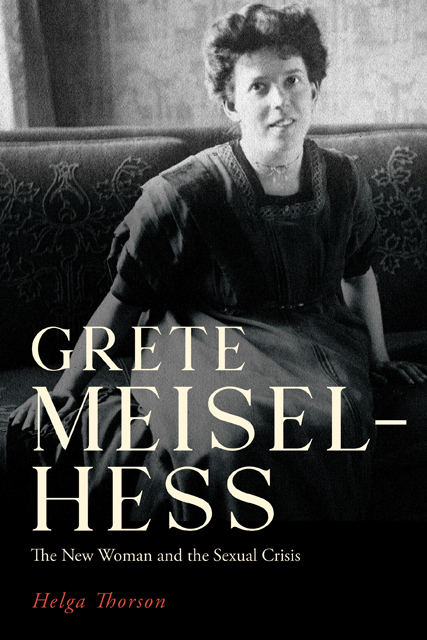Book contents
- Frontmatter
- Dedication
- Contents
- List of Illustrations
- Acknowledgments
- List of Abbreviations
- Introduction: Breaking with the Past, Forging the Future
- 1 The New Woman of the Early Twentieth Century
- 2 Feminism and Jewishness in Viennese Literary Modernism
- 3 Theorizing the Sexual Crisis through Journalism and Sexology
- 4 Effecting Change through Literature: Die Intellektuellen (1911)
- 5 Sexual Sociology during the First World War
- Conclusion: Living the Sexual Crisis
- Bibliography
- Index
1 - The New Woman of the Early Twentieth Century
Published online by Cambridge University Press: 11 January 2023
- Frontmatter
- Dedication
- Contents
- List of Illustrations
- Acknowledgments
- List of Abbreviations
- Introduction: Breaking with the Past, Forging the Future
- 1 The New Woman of the Early Twentieth Century
- 2 Feminism and Jewishness in Viennese Literary Modernism
- 3 Theorizing the Sexual Crisis through Journalism and Sexology
- 4 Effecting Change through Literature: Die Intellektuellen (1911)
- 5 Sexual Sociology during the First World War
- Conclusion: Living the Sexual Crisis
- Bibliography
- Index
Summary
Who was the New Woman of the early twentieth century and what did she signify? Was it a constructed trope or a lived reality? How did this personified image differ in the early years of the twentieth century from the New Woman of the Weimar Republic in Germany or the First Republic in Austria? And what did it mean to be new? How was the “new” perceived compared with the “old,” that is, how did the New Woman compare to the generations of women who came before? Much of the scholarship on the image of New Woman in German-speaking contexts has concentrated on the New Woman in the Weimar Republic in Germany as expressed through literature, film, pop culture, as well as real people in their daily lives of work and leisure.
With greater access to birth control, increased employment opportunities, voting rights, and new forms of entertainment and amusement, women in the Weimar Republic lived life differently from those women who came before them. Julia Roos, for example, describes the New Woman as not only sexually liberated, but as “young, unmarried, and childless, [who] earned her own income, and wore her hair cropped short in the androgynous Bubikopf (pageboy) style.” Helen Boak also reaffirms the image of the economically dependent and sexually liberated New Woman with her Bubikopf and “short skirt over her androgynous figure,” while also explaining that this construct of the New Woman was complex, multifaceted, and dynamic rather than static. Not only did the image of the New Woman proliferate broadly through advertising, film, and photography, but, according to Katie Sutton, it was “rarely understood as a single or homogenous [sic] ‘type.’” The image of the New Woman in the Weimar Republic was taken up across socioeconomic classes and signified a blurring of gender that also affected men as well as women. Furthermore, it challenged heteronormative structures and expectations, especially in conjunction with the sex-reform movements, particularly the work of the homosexual-rights advocate Magnus Hirschfeld and his work on transgender issues, cross-dressing, and the “Third Sex.”
Yet, although the construction of the New Woman has been most widely studied in the context of the German Weimar Republic, it was not limited to that time or place.
- Type
- Chapter
- Information
- Grete Meisel-HessThe New Woman and the Sexual Crisis, pp. 21 - 60Publisher: Boydell & BrewerPrint publication year: 2022



